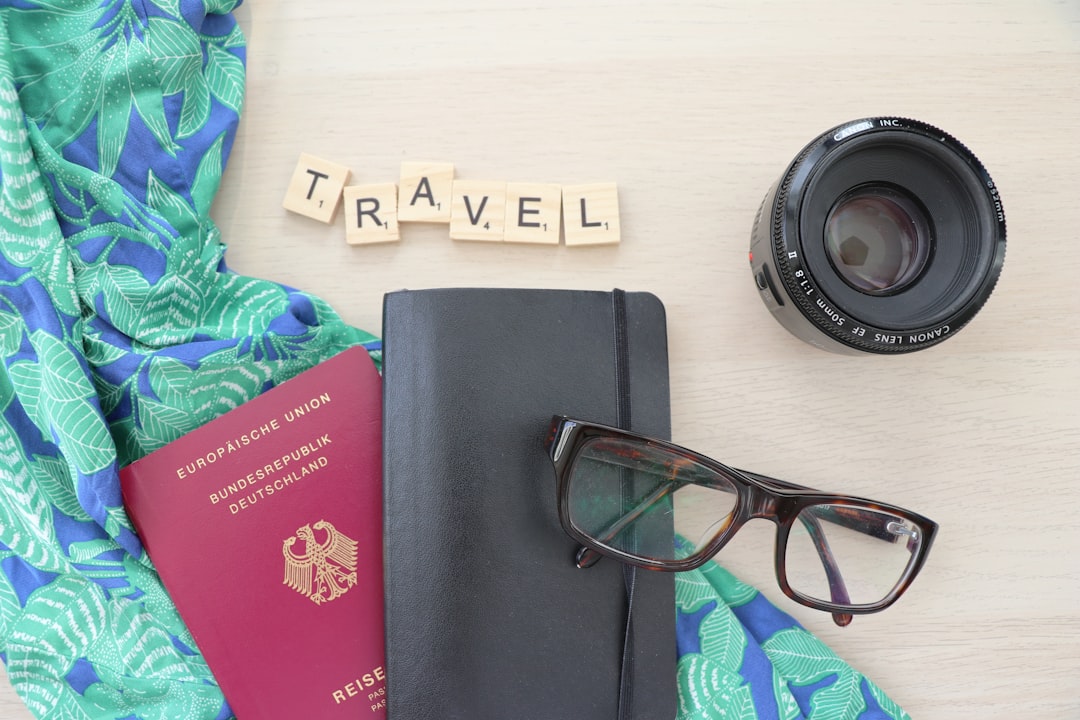Savvy Nomad Handbook to Global Cities and Low Cost Flights

Introduction
The modern nomad thrives on flexibility, culture, and cost efficiency. Finding the perfect city where you can work productively, enjoy a vibrant lifestyle, and keep travel expenses low is both an art and a science. This handbook pulls together the most practical insights on global cities that welcome digital nomads, and the flight‑saving tactics that turn long‑haul journeys into affordable adventures. Whether you are a seasoned remote worker or just testing the waters, the strategies below will help you map a route that balances productivity, adventure, and budget.
How to Pick a Nomad‑Friendly City
Cost of Living
A city’s monthly budget is the foundation of any nomad plan. Look at three key figures: accommodation, food, and transportation. Websites such as Numbeo, Expatistan, and Nomad List aggregate real‑time data from thousands of users. Aim for a total monthly cost that is 30‑50 % lower than what you would spend in a major Western hub.
Typical low‑cost brackets
- Budget tier – under $1,200 per month. Ideal for backpack‑style living, shared apartments, and street food markets.
- Mid tier – $1,200‑$2,500 per month. Offers a mix of private rentals, occasional dining out, and reliable public transit.
- Premium tier – $2,500‑$4,000 per month. Provides upscale apartments, coworking memberships, and a wider selection of leisure activities.
Internet Reliability
A stable, fast connection is non‑negotiable. Verify the average download speed (at least 15 Mbps for video calls) and the prevalence of fiber or 5G networks. Many nomad forums publish speed test results for cafés, coworking spaces, and residential areas.
Visa Flexibility
Long‑term stays hinge on visa policies. Some countries offer digital‑nomad visas that grant up to a year of residency for remote workers. Others provide visa‑free entry for 90‑180 days. Research the exact requirements—proof of employment, income thresholds, health insurance—and keep copies of all documentation in both digital and printed form.
Community and Safety
A supportive community reduces loneliness and accelerates learning about the city. Look for active meet‑up groups, coworking events, and language exchange circles. Safety is also paramount; consult travel advisories and local crime statistics. A city with a low violent‑crime rate and a strong expat presence usually offers a smoother transition.
Top Global Cities for Digital Nomads
Below is a curated list of cities that consistently score high on cost, connectivity, community, and lifestyle. The selections are grouped by region to make flight planning clearer.
Southeast Asia
- Chiang Mai, Thailand – Low rent, thriving coworking scene, and a laid‑back vibe. Monthly budget can stay under $1,200.
- Da Nang, Vietnam – Beach proximity, improving infrastructure, and a growing community of remote workers.
- Bali (Ubud & Canggu), Indonesia – Popular for its surf culture and wellness retreats. Higher tourist traffic but still affordable with careful budgeting.
Eastern Europe
- Tallinn, Estonia – Pioneering e‑residency program, fast internet, and a digital‑nomad visa for up to a year.
- Plovdiv, Bulgaria – Historic charm, cheap apartments, and a burgeoning tech scene.
- Lviv, Ukraine – Despite geopolitical concerns, the city offers an inexpensive cost of living and a strong café culture for those willing to monitor the situation closely.
Latin America
- Medellín, Colombia – Known as the “City of Eternal Spring,” excellent public transport, and a thriving coworking ecosystem.
- Buenos Aires, Argentina – Rich cultural life, vibrant nightlife, and a favorable exchange rate for many currencies.
- Santiago, Chile – Strong infrastructure, safety, and a growing startup community. Slightly higher costs but balanced by high quality of life.
Africa
- Porto, Portugal – While technically European, the city’s coastal climate and affordable lifestyle make it a gateway to African travel.
- Cape Town, South Africa – Spectacular scenery, reliable internet, and a diverse expat community. Seasonal price fluctuations require careful timing.
Middle East
- Dubai, United Arab Emirates – Tax‑free income, world‑class infrastructure, and an emerging remote‑work visa. Higher living costs are offset by safety and connectivity.
- Amman, Jordan – Low rent, growing tech scene, and a strategic location for exploring the Levant.
Low‑Cost Flight Strategies
Finding cheap flights is a skill that can shave thousands of dollars off a year of travel. Below are proven tactics that work across continents.
Book Early, but Not Too Early
Airlines often release seats at their lowest price 6‑8 weeks before departure. Use price‑tracking tools like Google Flights, Skyscanner, or Kayak to set alerts for your desired route. When a price dips below your budget threshold, book immediately.
Be Flexible With Dates and Airports
Mid‑week flights (Tuesday, Wednesday, Thursday) are generally cheaper than weekend departures. If you can shift your travel by a day or two, you’ll often see a significant price drop.
Many cities have multiple airports. For example, flying into Bangkok’s Don Mueang (DMK) instead of Suvarnabhumi (BKK) can save up to 30 %. Check all nearby airports when searching.
Use “Nearby City” Searches
Sometimes the cheapest connection is a short train or bus ride after landing. For instance, flying into Kuala Lumpur and then taking a 2‑hour bus to Singapore may be far cheaper than a direct flight.
Leverage Low‑Cost Carriers (LCCs)
LCCs dominate short‑haul routes in Asia, Europe, and Latin America.
Key Asian LCCs
- AirAsia (covers most of Southeast Asia)
- VietJet Air (Vietnam and neighboring countries)
- Scoot (Singapore and regional routes)
Key European LCCs
- Ryanair (covers most of Europe)
- Wizz Air (Eastern Europe focus)
- EasyJet (Western Europe)
Key Latin American LCCs
- Volaris (Mexico)
- Sky Airline (Chile)
- GOL (Brazil)
When booking LCCs, watch out for extra fees: checked baggage, seat selection, and even printing boarding passes. Factor these into your total cost.
Combine Airlines With “Mix‑And‑Match” Tools
Some search engines allow you to piece together itineraries from multiple airlines without a single carrier’s partnership constraints. This can uncover hidden savings, especially on intercontinental legs where a budget carrier handles one segment and a legacy carrier the other.
Exploit “Error Fares”
Occasionally airlines publish tickets at dramatically reduced prices due to technical glitches. Websites like Secret Flying and The Flight Deal highlight these opportunities. Act quickly; error fares disappear within hours.
Use Points, Miles, and Credit Card Rewards
If you travel frequently, a travel credit card can offset a large portion of your expenses. Look for cards that offer a high welcome bonus and generous points on travel purchases. Transfer partners such as Chase Ultimate Rewards, American Express Membership Rewards, and Citi ThankYou allow you to book flights directly with airlines, often at a lower redemption rate than airline‑specific points.
Practical tip – Book “award seats” on premium cabins for the same price as a regular economy ticket during off‑peak periods. The experience upgrade is worth the extra points.
Embrace “Open‑Jaws” and “Stopover” Policies
Many airlines permit a free or low‑cost stopover in their hub city. For example, Icelandair allows a 7‑day stopover in Reykjavik at no extra charge. Use this to explore an extra destination without buying a separate ticket.
Choose “Round‑Trip” Over “One‑Way” When Viable
On most routes, round‑trip tickets remain cheaper than two one‑way fares. Even if you plan a flexible itinerary, purchase a round‑trip ticket and then change the return date (often for a modest fee).
Monitor Seasonal Pricing
High‑season demand spikes ticket prices. Traveling just before or after peak months can reduce costs dramatically. For example, visiting Bali in April (the shoulder season) is often 40 % cheaper than the July‑August peak.
Use “Hidden City” Ticketing Cautiously
Some search tools (e.g., Skiplagged) reveal tickets where the cheapest fare is to a farther destination with a layover at your intended city. This works for one‑way trips on airlines that do not check bags. Be aware that airlines consider this a violation of their contract of carriage, and frequent use can lead to penalties.
Building an Efficient Flight Routine
Step 1 – Define Your Core Hub
Select a primary city where you intend to stay for 1‑3 months. This becomes your “hub.” The hub should have a reliable airport with many low‑cost connections. For example, Kuala Lumpur, Bangkok, and Lisbon are excellent hubs due to their airline ecosystems.
Step 2 – Map Out “Radiating” Destinations
From the hub, identify nearby cities that can be reached within 2‑5 hours of flight time. Use a spreadsheet to list each destination, average flight cost, and a brief note on visa requirements.
Step 3 – Allocate Budget per Leg
Assign a realistic budget for each flight segment based on historical price data. Keep a buffer of 10‑15 % for unexpected surcharges.
Step 4 – Book in Batches
Instead of booking each leg separately, use a “multi‑city” search to lock in a series of flights at once. This often yields a lower overall price and ensures you have a coherent travel plan.
Step 5 – Set Up Alerts for Changes
Even after booking, price alerts can inform you of a fare drop on a future leg. Some airlines allow you to re‑price a ticket for a small fee, turning an originally expensive leg into a bargain.
Step 6 – Prepare Documentation
Before each departure, double‑check passport validity, visa status, and any required vaccination certificates. Keep digital copies on a secure cloud service and a printed version in your carry‑on.
Step 7 – Pack Light and Smart
A 30‑liter carry‑on that fits airline cabin dimensions eliminates checked‑bag fees. Use packing cubes, a lightweight laptop sleeve, and a portable Wi‑Fi hotspot. A well‑packed bag reduces stress and speeds up airport navigation.
Practical Tools and Resources
- Google Flights – Fast price comparison, calendar view, and price‑track alerts.
- Skyscanner – Excellent for exploring flexible dates and nearby airports.
- Hopper – Predictive algorithm that tells you whether to book now or wait.
- Rome2rio – Visual map of transport options (flight, train, bus, ferry).
- Airline Apps – Most carriers have mobile apps that let you manage bookings, check‑in, and receive real‑time flight updates.
- Nomad List – Community‑driven data on cost of living, internet speed, and safety.
- Reddit r/digitalnomad – Peer advice on visa processes, coworking spaces, and flight hacks.
- TripIt – Organizes all travel confirmations into a single itinerary.
Sample Itineraries
Southeast Asian Loop (3‑Month Stretch)
| Week | Base City | Key Activities | Approx. Flight Cost (USD) |
|---|---|---|---|
| 1‑2 | Chiang Mai | Coffee‑shop work, temple tours | — |
| 3‑4 | Bali (Ubud) | Yoga retreats, beach days | 120 |
| 5‑6 | Kuala Lumpur | Coworking events, culinary tour | 90 |
| 7‑8 | Ho Chi Minh City | Startup meet‑ups, river cruise | 80 |
| 9‑10 | Da Nang | Surf lessons, mountain hikes | 70 |
| 11‑12 | Bangkok | Market hopping, language exchange | 60 |
Total flight budget: ~ $420, well under a $600 allocation.
Eastern European Circuit (2‑Month Stretch)
| Week | Base City | Highlights | Approx. Flight Cost (USD) |
|---|---|---|---|
| 1‑2 | Tallinn | E‑residency workshop, medieval Old Town | — |
| 3‑4 | Riga | Design district, Baltic coast | 75 |
| 5‑6 | Warsaw | Tech meet‑ups, historic sites | 60 |
| 7‑8 | Kraków | Cultural festivals, coworking spaces | 55 |
Total flight budget: ~ $190, leaving ample room for accommodation upgrades or weekend trips.
Money‑Saving Tips for On‑Ground Expenses
- Use Local SIM Cards – A data plan from a local provider is often cheaper than international roaming.
- Cook Some Meals – Many hostels and coworking spaces have kitchen facilities. Buying groceries from local markets reduces food costs dramatically.
- Public Transport Passes – Monthly or weekly passes are cheaper than single tickets and often include discounts for attractions.
- Free Wi‑Fi Spots – Libraries, cafés, and university campuses frequently provide high‑speed internet at no charge.
- Negotiate Long‑Term Rentals – Booking a month‑long stay directly with a landlord can shave 10‑20 % off the price quoted on platforms like Airbnb.
Managing Work While Traveling
Establish a Routine
Even in an exciting new city, a predictable schedule enhances productivity. Aim for a “core window” of 4‑6 hours of deep work each day, preferably aligned with your client’s or employer’s time zone.
Choose the Right Workspace
- Coworking Spaces – Offer fast internet, meeting rooms, and networking events. Look for spaces that provide a “pay‑as‑you‑go” day pass if you only need occasional office time.
- Cafés – Opt for places with power outlets, good lighting, and a relaxed ambiance. Use a portable Wi‑Fi hotspot as a backup.
- Public Libraries – Quiet, reliable internet, and often free meeting rooms.
Set Boundaries
When you’re in a social environment, it’s easy to blur work and leisure. Use a “do not disturb” sign on your laptop, and communicate your availability to coworkers and friends.
Backup Your Data
Traveling increases the risk of device loss or theft. Store critical files in cloud services like Google Drive, Dropbox, or OneDrive. Keep an encrypted external SSD in your carry‑on for additional redundancy.
Health, Safety, and Insurance
- Travel Health Insurance – Choose a plan that covers telemedicine, COVID‑19 testing, and emergency evacuation. Companies such as World Nomads and SafetyWing cater specifically to digital nomads.
- Local Emergency Numbers – Keep a list of the country’s emergency services (police, ambulance, fire).
- Vaccinations – Verify required immunizations for each destination. Some countries demand proof of yellow fever vaccination if you arrive from certain regions.
The Nomad Mindset
Traveling as a remote worker is as much about personal growth as it is about location independence. Embrace cultural curiosity, practice adaptability, and stay open to serendipitous opportunities. The best experiences often arise when you step out of your comfort zone—whether that means joining a local startup pitch night, learning a few phrases in a new language, or trying a dish that looks wildly unfamiliar.
Checklist Before You Go
- [ ] Verify passport expiration (minimum 6 months beyond planned return)
- [ ] Obtain required visas or digital‑nomad permits
- [ ] Purchase travel health insurance
- [ ] Set up flight price alerts for all planned legs
- [ ] Book primary accommodation for the first month
- [ ] Reserve coworking space trial passes (if needed)
- [ ] Install essential travel apps (flight tracker, translation, currency converter)
- [ ] Pack a 30‑liter carry‑on with work essentials, clothing for varied climates, and a portable charger
- [ ] Back up important documents to a secure cloud service
- [ ] Inform bank of travel dates to avoid card blocks
Final Thoughts
The savvy nomad knows that the magic of location independence lies in the intersection of smart planning and spontaneous discovery. By selecting cities that balance affordability, connectivity, and community, and by mastering the art of low‑cost flight acquisition, you can stretch your budget further than you ever imagined. Use the tools, strategies, and itineraries in this handbook as a foundation, then personalize each element to fit your unique work style and travel aspirations. The world is vast, the sky is full of affordable routes, and your next productive day could be waiting in a café you haven’t yet visited. Safe travels and happy working!
Random Posts

Smart Packing Hacks for Long Term Travel
Learn to pack light for months of travel by shifting your mindset, choosing multi-use items, and planning on-the-go replacements. These practical hacks turn bulky baggage into a flexible, organized system so you can focus on the adventure
3 weeks ago

Unlock Freedom with Must Read Books and Must Have Apps
Discover the books that reshape your nomadic mindset and the apps that turn ideas into daily wins, creating a feedback loop that fuels freedom, productivity, and adventure.
2 months ago

Podcasts That Inspire Travel, Productivity and Lifestyle Freedom
Podcasts turn travel time into a learning hub, giving modern nomads bite size insights on productivity, adventure and lifestyle freedom, so every flight, train ride or hostel night fuels growth and community.
1 week ago

Building a Global Community for Sustainable Digital Nomads
Discover how digital nomads can unite around eco-friendly practices, low-impact packing, shared resources, and collective advocacy to keep the nomadic lifestyle thriving without harming the planet
1 month ago

From Desk to Destination Boosting Output as a Digital Nomad
Learn how to turn every new city into a productivity boost, with mindset shifts, planning hacks, essential tools and habits that let digital nomads work smarter, not harder, wherever they roam.
2 months ago
Latest Posts

Essential Software Every Remote Professional Should Use
Master remote work with essential tools: instant messaging like Slack, high definition video calls such as Zoom, and asynchronous voice apps. Streamline communication, stay connected and boost productivity.
1 day ago

Mastering Remote Work Productivity for Digital Nomads and Freelancers
Learn proven habits, tools, and tactics that help digital nomads and freelancers stay focused, deliver quality work, and maintain a sustainable lifestyle while traveling the world.
1 day ago

Tech‑Friendly European Towns Perfect for Remote Living
Discover Europe’s best small towns where fast internet, affordable living and vibrant tech communities let you work remotely while soaking up historic charm, lakeside views or mountain air.
1 day ago